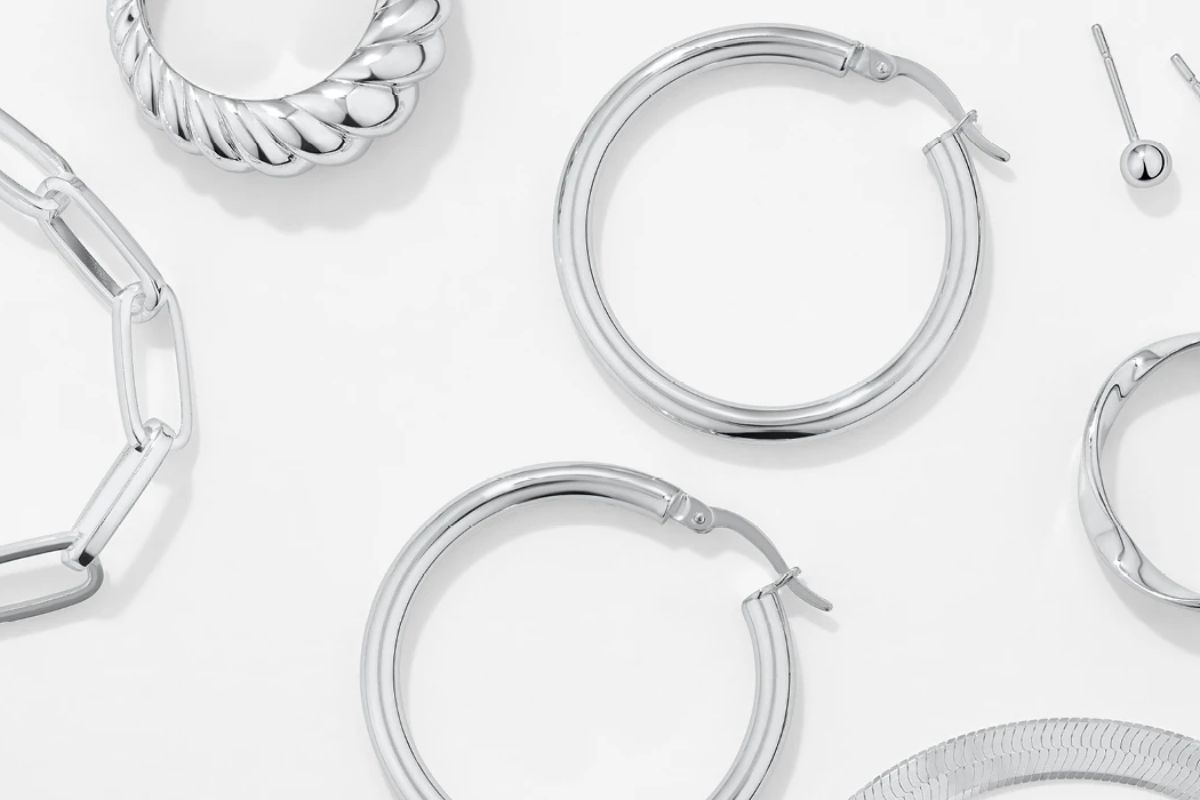The choice between sterling and pure silver, in most scenarios regarding silver jewelry, tableware, or decorations, often reaches the level of a choice made between these two. Having such a variety of variations with regard to composition and durability and usability for their specific applications has led everyone buying it to wonder as to which one is better. It’s within this article that will deeply describe both characteristics so one may be in a very well-informed position to make appropriate decisions.
Understanding Pure Silver
Pure silver, or “fine silver,” is the naturally occurring form of silver within the Earth’s crust. It contains 99.9% purity, which means it has only a tiny proportion of other elements.
Properties of Pure Silver
- It is made up of 99.9% silver and is, therefore, the closest to the natural form of silver.
- Pure silver is soft and malleable. Its softness makes it unsuitable for items that are bound to be exposed to wear and tear.
- Resistant to Tarnish: Pure silver does not tarnish as fast as any other silver alloy.
- Hypoallergenic: Since it is pure, it causes skin irritation very rarely.
Common Uses of Pure Silver
Pure silver is used to make objects where malleability and shine are prioritised. Such products include jewelry, coins, and collectibles. It cannot be used for daily wear or even utensils, though, because it is too soft.
What is Sterling Silver?
Sterling silver is an alloy of pure silver mixed with another metal, usually copper. The union creates a more durable material, making it ideal for application in a wide range of applications. It contains 92.5% silver and 7.5% of other metals. Sterling silver is stamped on a “925” stamp often because of this.
Properties of Sterling Silver
- Sterling silver is very strong since the copper enhances its strength. Due to this, it will be resistant to scratches and dents.
- Versatile: Its increased hardness makes it suitable for everyday items.
- Affordable: Sterling silver is less expensive than pure silver.
- Susceptible to Tarnish: The copper in it tends to oxidize over time.
Common Uses of Sterling Silver
Sterling silver is widely used in silver jewelry, cutlery, decorative items, and accessories. Its balance of affordability, durability, and beauty makes it a popular choice for both artisans and consumers.
Sterling Silver vs. Pure Silver: Key Differences
| Aspect | Pure Silver | Sterling Silver |
| Composition | 99.9% silver | 92.5% silver, 7.5% alloy |
| Durability | Soft and malleable | Strong and durable |
| Tarnish Resistance | Higher resistance | More prone to tarnishing |
| Hypoallergenic | Yes | Sometimes, depending on alloy |
| Cost | Higher | More affordable |
| Common Uses | Collectibles, coins, fine jewelry | Everyday jewelry, cutlery, décor |
Which Silver is Better for Jewelry?
When choosing between sterling silver and pure silver for jewelry, consider the intended use.
- Everyday Wear: Sterling silver is ideal for rings, bracelets, and earrings you plan to wear frequently. Its durability ensures it can withstand daily activities.
- Occasional Wear or Collectibles: Pure silver’s high shine and rarity make it perfect for heirloom pieces or items reserved for special occasions.
Essential Tips for Maintaining Sterling Silver and Pure Silver
Caring for Sterling Silver
- Polish Regularly: Use a soft polishing cloth to remove the tarnish.
- Store Properly: Keep in anti-tarnish pouches or a jewelry box.
- Avoid Moisture: Remove jewelry before swimming or showering.
Caring for Pure Silver
- Gentle Cleaning: Use a microfiber cloth to avoid scratches.
- Store Carefully: Store in a soft cloth or box to prevent damage.
- Minimal Exposure: Avoid contact with chemicals or harsh environments.
When to Choose Pure Silver Over Sterling Silver?
Opt for pure silver when:
- You want a high-value, hypoallergenic material.
- You are purchasing collectible or decorative items.
- Durability is not a major concern.
Read also: Tips to find wedding jewelry
When is Sterling Silver the Better Choice?
Sterling silver shines in situations where:
- Durability is essential.
- Budget is a consideration.
- Items are for daily use, such as cutlery or wearable jewelry.
What About Silver-Plated Items?
Silver-plated products are a cost-effective alternative but lack the durability and authenticity of sterling or pure silver. These items are coated with a thin layer of silver, which can wear off over time.
Can Sterling Silver Tarnish? How Does It Compare to Pure Silver?
Another common complaint about silver is that it tarnishes its shine over time. Tarnishing occurs when silver interacts with sulfur or hydrogen sulfide in the air and forms a dark silver sulfide layer on its surface.
Does Sterling Silver Tarnish?
Pure silver tarnishes less compared to sterling silver because it has a different composition. The 7.5% added metals are normally copper, which is a very reactive metal with air and moisture, thus promoting the tarnishing process. Tarnish in sterling silver may be caused by environmental factors that include humidity, pollution, and even some foods.
How About Pure Silver?
Pure silver has a smaller tendency to tarnish, due to a higher percentage of purity as well as less reactivity with the air, while sterling is not completely proof and gets a slight patina at times, most especially from sulfur-containing materials.
Why Does Sterling Silver Tarnish Faster?
The presence of copper in sterling silver is the primary reason for its faster tarnishing rate. Copper oxidizes more easily than silver, and this reaction affects the entire alloy, causing the surface to darken.
Can Tarnish Be Removed?
Tarnish is not permanent and can be removed with proper care and cleaning techniques:
- Clean using commercial silver polish or a homemade paste of baking soda for the surface of Sterling Silver.
- Clean using a mild soap solution, and a soft cloth for Pure Silver. The tarnish on pure silver is less significant, so cleaning is a bit milder.
Preventing Tarnish
- Sore in anti-tarnish bags or cloths for sterling silver.
- Exposure to air, water, and chemicals should be minimized.
- Wear Regularly: Believe it or not, wearing silver jewelry helps slow down tarnishing as natural body oils create a protective layer.
Comparing sterling silver with pure silver, it’s clear that tarnishing is a problem more for sterling silver, but with proper care and maintenance, both the type of silver can retain the shine and beauty for thousands of years.
Sterling Silver vs. Pure Silver: Environmental and Ethical Considerations
Both sterling and pure silver also carry environmental impacts, mainly from mining. But silver that has been recycled is on the rise as a more eco-friendly alternative. Check out the brands that stress sourcing responsibly and recycling.
How to Verify Authenticity
To ensure you are buying genuine silver:
- Check for marking “999” if pure silver or “925” for sterling silver.
- You may check if it’s not magnetic (silver).
- Purchase from a reputable jeweler or an authorized dealer.
Conclusion
You get to choose between sterling silver and pure silver, based on your priorities — durability, budget, or aesthetic appeal. Sterling silver is perfect for practical, everyday use, whereas pure silver is best for collectors and those with a taste for luxury. Whatever you choose, both types of silver are always going to offer timeless beauty and unmatched elegance, making them perfect additions to your life.











